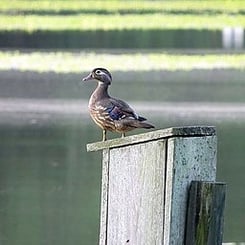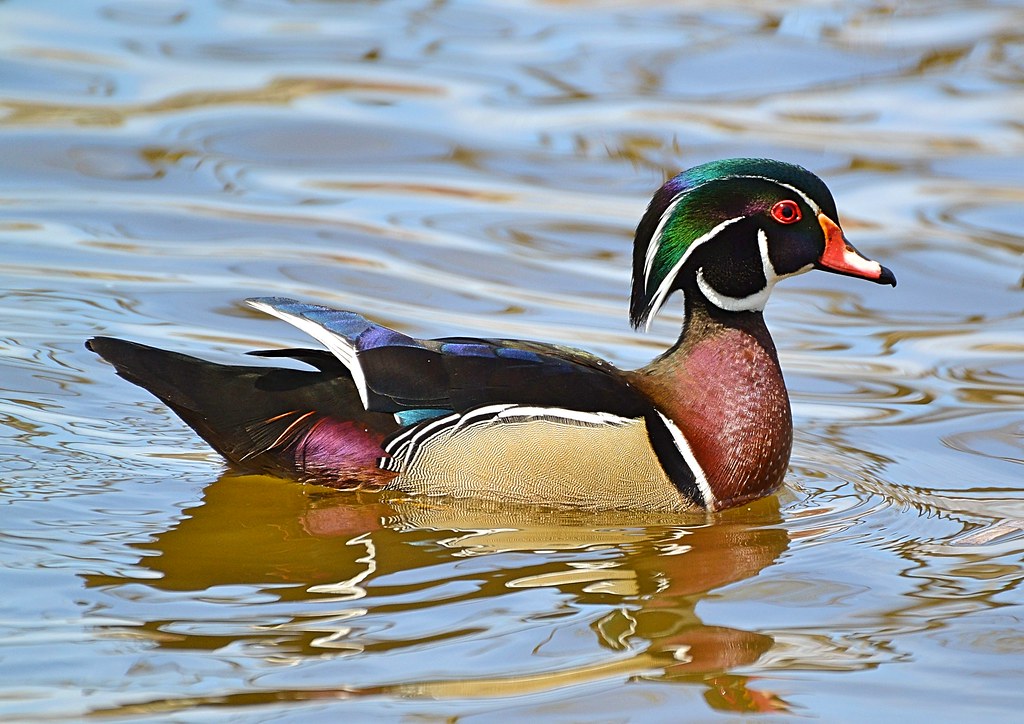When providing artificial nesting boxes for wood ducks, there are a few key elements to consider. Wood ducks will nest in any cavity they can find, but improper placement can lead to increased hatching rates and decreased brood survivability. Ducklings are flightless for up to 50 days post-hatching.
If nest boxes are not placed in suitable brooding habitat, hens will lead broods overland in search of more suitable habitat. This endeavor can reduce wood duck populations by placing the hen at greater risk of predation and wasting her time and energy.
Improve Wood Duck Brooding Habitat with Artificial Nesting Boxes
 Proper brooding habitat would be in close proximity to high-quality wetlands and/or bottomland hardwood forests with flooded timber. These brooding habitats would also contain abundant emergent aquatic vegetation such as cattails, lilies, sedges, and rushes. Woody cover and food sources such as buttonbush, willow oak, water oak, wax myrtle, and hazel alder are also beneficial. Avoid mowed lawns, city parks, and backyard fishing ponds with clear shorelines because they provide little to no cover or food for your ducklings.
Proper brooding habitat would be in close proximity to high-quality wetlands and/or bottomland hardwood forests with flooded timber. These brooding habitats would also contain abundant emergent aquatic vegetation such as cattails, lilies, sedges, and rushes. Woody cover and food sources such as buttonbush, willow oak, water oak, wax myrtle, and hazel alder are also beneficial. Avoid mowed lawns, city parks, and backyard fishing ponds with clear shorelines because they provide little to no cover or food for your ducklings.
Instead, choose wooded perennial creeks near water bodies and overgrown shallow areas of fishponds near cover for your artificial nesting boxes. That way you can replicate a more natural brooding habitat and still enjoy watching the wood ducks.
The placement of nest boxes in these habitats should be at least five feet high and preferably over and facing the water. Boxes can be placed at a slight forward angle to help ducklings climb out once hatched.
Best Nesting Box Placement to Prevent "Dump Nesting."
Wood ducks and black-bellied whistling ducks will perform what is referred to as “dump nesting” where hens will lay eggs in several cavities but do not incubate them. Dump nesting occurs when there are too many available nesting locations in close proximity to each other, which results in the abandonment of nests in many cases. If a nest has more than 15 eggs it is considered a dump nest.
To prevent dump nesting, ensure nest holes are not visible from one to another and space them out as much as possible. It is not recommended that boxes be affixed to trees, because predators can more easily access boxes from above and the side, and trees grow, which can break boxes over time.



